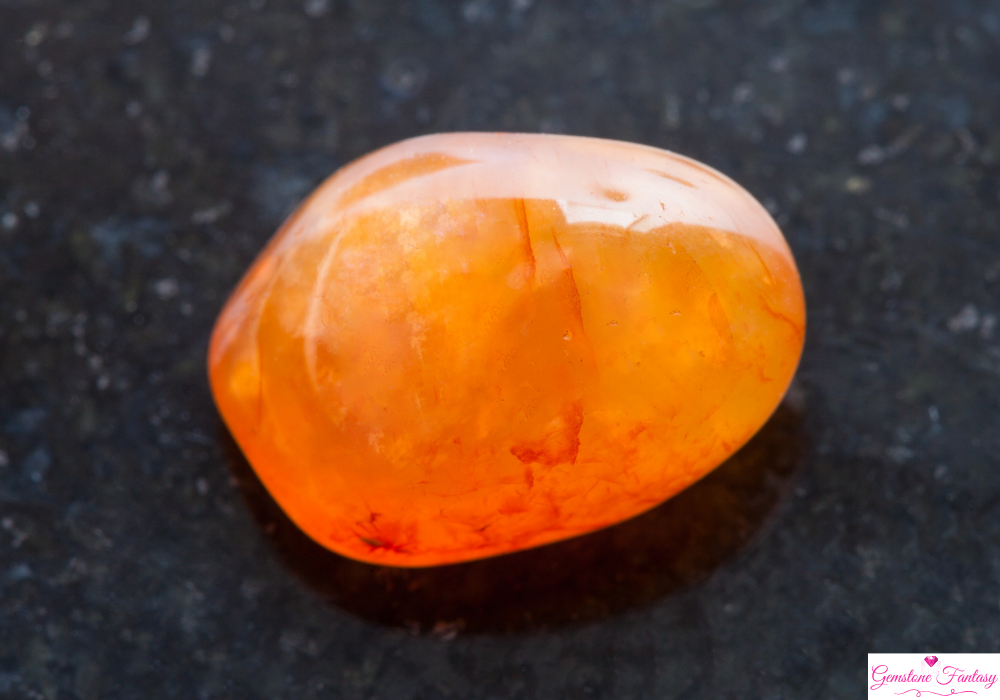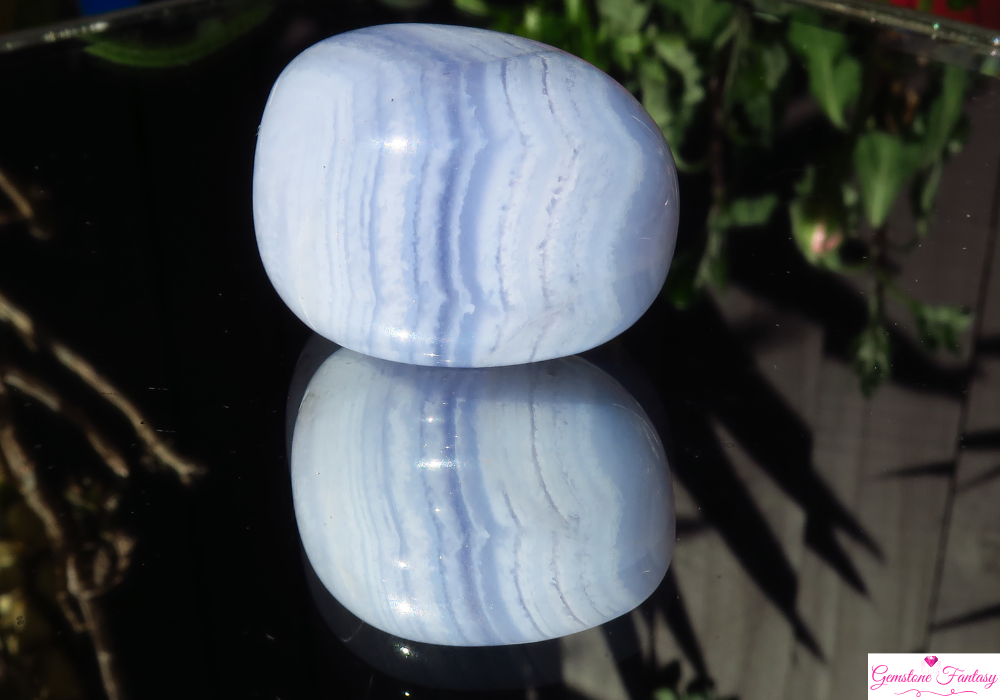Carnelian is a captivating, warm-toned gemstone that has been cherished for centuries. Known for its deep orange, red, and reddish-brown hues, this semi-precious stone is a variety of chalcedony, a form of quartz. It has a rich history tied to ancient civilizations, where it was revered for its beauty, strength, and vitality. Today, carnelian remains a popular choice for jewelry, talismans, and holistic healing practices due to its energetic qualities and striking appearance.
Geological Formation
Carnelian is a microcrystalline quartz, formed through the cooling and solidification of silica-rich solutions found within volcanic rocks and cavities. The stone’s distinctive reddish color comes from the presence of iron oxide, which becomes more pronounced with exposure to heat or natural environmental conditions over time.
- Formation Process: Carnelian forms in cavities of igneous and metamorphic rocks, where silica solutions gradually cool and crystallize. Over time, iron inclusions give the stone its characteristic red-orange color.
- Primary Locations: Major deposits of carnelian can be found in Brazil, India, Uruguay, and parts of the United States (notably in Oregon and Washington).
Varieties and Classifications
While carnelian is primarily recognized for its orange-red color, its appearance can range in hue depending on the concentration of iron and other elements within the stone. Common classifications of carnelian include:
- Red Carnelian: The most vivid and sought-after variety, displaying a deep red hue.
- Orange Carnelian: Lighter in tone, with a more translucent, orange color that is commonly used in jewelry.
- Brownish Carnelian: Featuring darker, earthier tones, this variety is typically less translucent and more affordable.
Cultural Significance and Folklore
Carnelian has a long history of cultural importance, symbolizing strength, protection, and vitality in various ancient civilizations:
- Ancient Egypt: Carnelian was associated with the goddess Isis and was used as a protective amulet for the afterlife. It was often placed in tombs to guard the dead on their journey to the afterlife.
- Roman and Greek Cultures: Roman soldiers carried carnelian amulets engraved with symbols of courage and protection in battle. In Greek mythology, carnelian was linked to the goddess of love and passion, Aphrodite.
- Islamic Tradition: Carnelian, or “aqeeq,” holds spiritual significance, particularly in Muslim culture, where it is worn for protection and strength.
Birthstone and Zodiac Connections
Carnelian is not an official birthstone but is often associated with the zodiac signs Leo (July 23 – August 22) and Virgo (August 23 – September 22). For Leos, carnelian is believed to enhance their natural creativity, confidence, and boldness. For Virgos, it can provide motivation and help them overcome self-doubt.
Healing and Metaphysical Properties
In crystal healing, carnelian is considered a stone of action, passion, and motivation. Its energetic and empowering properties are thought to have a wide range of benefits, such as:
- Physical Vitality: Carnelian is often used to boost physical energy and vitality, making it a popular stone for those looking to increase stamina or enhance athletic performance.
- Confidence and Motivation: It is believed to ignite self-confidence, courage, and motivation, helping individuals overcome procrastination and take bold steps toward achieving their goals.
- Emotional Healing: Carnelian is thought to help release negative emotions, particularly fear and anger, allowing individuals to express themselves more freely and with clarity.
- Sacral Chakra Activation: Carnelian is associated with the sacral chakra, which governs creativity, sexuality, and emotional expression. It is used to stimulate this energy center, fostering creativity and passion.
Popular Uses in Jewelry and Design
Carnelian’s vibrant color and durability make it a popular choice for a variety of artistic and decorative applications:
- Jewelry: Carnelian is often used in rings, necklaces, bracelets, and earrings. It is typically cut into cabochons or beads to highlight its rich color and smooth surface.
- Carvings and Decorative Pieces: Due to its hardness (6.5 to 7 on the Mohs scale), carnelian is frequently carved into statues, figurines, or intricate designs. Ancient seals and signet rings were often made of carnelian.
- Tumbled Stones and Crystals: Carnelian is polished into tumbled stones for use in crystal grids, meditation, and energy work.
How to Identify Authentic Gemstones
Authentic carnelian can be distinguished by its color, texture, and physical properties. Here are some tips for identifying genuine carnelian:
- Color: Genuine carnelian ranges from light orange to deep red and often displays a uniform, slightly translucent appearance. Dyed agate is sometimes sold as carnelian, but real carnelian has a more natural and subtle hue.
- Hardness: Carnelian ranks 6.5 to 7 on the Mohs hardness scale, making it resistant to scratching. If the stone is easily scratched by harder materials, it may not be real.
- Heat Sensitivity: Real carnelian can withstand moderate heat without fading, unlike some dyed stones which may lose their color when exposed to high temperatures.
Tips for Caring and Storing
To maintain the beauty and longevity of your carnelian jewelry or crystals, it’s important to follow these care guidelines:
- Cleaning: Clean carnelian with warm, soapy water and a soft cloth. Avoid harsh chemicals or ultrasonic cleaners, as they can damage the stone’s surface.
- Avoid Prolonged Sunlight: While carnelian can be exposed to sunlight for short periods, prolonged exposure may cause the color to fade over time. Store carnelian away from direct sunlight.
- Safe Storage: Store carnelian jewelry separately from harder stones to prevent scratching. A soft cloth pouch or lined jewelry box works well for this purpose.
Market Trends and Pricing
Carnelian is an affordable gemstone, making it accessible to a wide range of buyers. Its price can vary based on the intensity of color, translucency, and craftsmanship. Factors that influence carnelian’s market trends include:
- Sustainability and Ethical Sourcing: As consumer demand for ethically sourced gemstones grows, there is increasing interest in carnelian that is mined responsibly and supports fair labor practices.
- Rising Popularity in Holistic Practices: With the growing popularity of crystal healing and alternative wellness practices, carnelian has gained traction as a stone used to support creativity, passion, and vitality.
Final Thoughts
Carnelian is a powerful and dynamic gemstone that has captivated humanity for centuries. Its bold color and energizing properties make it a favorite for jewelry, spiritual work, and emotional healing. Whether you’re drawn to its ancient history, metaphysical benefits, or aesthetic beauty, carnelian offers a timeless and accessible option for those seeking both visual appeal and deeper meaning. With proper care, this radiant gemstone can bring vitality, courage, and creativity into your life.

















